How to Drop the Needle
Records on vinyl are, unassailably, pretty cool. There’s something about the action of “dropping the needle” and the aesthetic that goes along with a turntable and sleek black LP that speaks to the same pseudo-nostalgic part of the brain that is blown away by the concepts of leather jackets and black-and-white movies.
That “coolness,” coupled with the diminishing practicality of other physical music mediums like CDs, has contributed to a vinyl boom in the past decade, with young people buying up records at unprecedented rates, even as music streaming services like Spotify and Apple Music grow by the day. According to Statista, record sales increased 2750% from 2007 to 2020, with the volume of units sold increasing each year in that span.
With the vinyl boom, records have become modernized in a way most outdated media formats don’t. You can get a Taylor Swift 12-inch LP; you can’t get Avengers: Endgame on VHS. There lies another appeal of vinyl: mixing the old with the new, and being able to listen to whatever music you like in a vintage medium.
If you’re looking to start collecting records as a high schooler, though, the process can be daunting. “What’s a preamp?” you might ask. “Should I buy a $30 or $3000 turntable?”
Luckily for you, I am here to answer all of the questions you could possibly have, plus exactly 14 more. I’ve been collecting records for about as long as I remember (18 months or so), so I can give you a step-by-step guide to record collecting, and one day maybe you too can join the legions of zoomers and millennials eager to scoff at anyone who calls it a “needle” and not a “stylus.” (This is a very unimportant distinction that we will not get into later.)
“Is This It”
This is an important question. Collecting records, unfortunately, is not the kind of hobby that you can quickly and easily get out of. It will require some time and money, and you should make sure that you actually want to listen to what you buy.
If you’re looking into collecting vinyl, it is important to be dissuaded from one notion that you may have heard from pretentious people: vinyl does not sound better than music you can stream online. At one time, perhaps, streaming was compressed enough for it to sound recognizably different, but at this point, the data is so sophisticated as to be unrecognizable from any physical medium in terms of sheer sound quality.
It is true that vinyl is often directly converted from analog recordings, making the audio technically closer to the original sound than any digital file could ever be, but that difference is just not recognizable enough for me, at least, to notice in the slightest.
The sound quality argument can’t even be made for a large contingent of newer records (newer meaning since the 80s, basically), because most music today is recorded digitally, so there’s no analog to carry over.
In general, I would even say records sound worse than streaming, because records get dirty and warped, adding imperfections to the sound that you won’t find on Spotify. You can try to mitigate these disruptions to the sound, but in all likelihood, you’re not getting them out entirely, and they will keep appearing as the record becomes more worn over time.
Not to pile on vinyl too much, but you should remember that it is not exceedingly convenient to listen to, at least compared to streaming. If you’re getting into vinyl, I would recommend you also have a subscription to some streaming service, because you won’t be able to listen to your records all that often, and even if you do, your selection of music will be very limited, at least at first. In short, I would not start collecting records with the intent of that being your primary source of music, unless you don’t listen to all that much music in your daily life.
“You Think I Ain’t Worth a Dollar, but I Feel Like a Millionaire”
So, you’ve decided to start collecting records despite all my warnings. In the heading of this section, the “You” refers to you (and me as your dedicated guide) and the “I” refers to all of the things you’re going to have to buy. (Metaphorically, of course, as I’m not sure Josh Homme could have predicted this piece’s publication back in 2002.) The metaphor itself isn’t exact, but you get what I’m saying: this stuff costs a lot.
There are four components of a record player that you are going to have to buy: the turntable, the preamp, the amplifier, and the speakers. But what are all those? Calm down, I’m going to tell you.
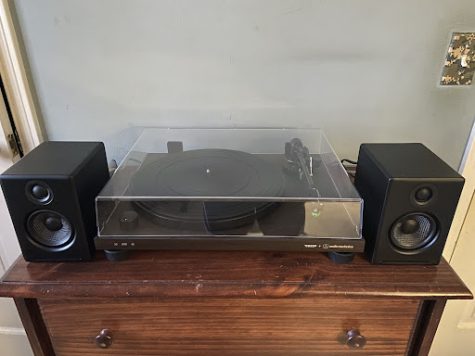
The turntable is exactly what you think of when you picture a record player; it’s the piece with the circular plate on which to place your record, and with an arm that ends in a stylus which is placed on the record’s surface.
The preamp and amplifier are the lesser-known parts of the vinyl setup, but you will need them if you want to hear anything when your records play. Essentially, they just make the signal coming from the turntable stronger while maintaining the qualities of the music that’s on the physical disc.
Finally, there are the speakers, which are pretty self-explanatory. They play the music itself, and they’re probably the component that you’re most likely to have in your own house.
You can find “all-in-one” turntables, which combine all four elements into one suitcase-like package, and allow you to listen to records most easily.
These “all-in-ones,” though inexpensive and functional, aren’t your best option if you want to collect records, though. They’re notorious for their lackluster sound quality, but beyond that, they can damage records, with the stylus pressing down too hard on the vinyl, which can ruin the media permanently.
“All-in-ones” can go for less than $80, but that cost is going to be offset by the drop-off in sound and the records that’ll be damaged permanently.
To get at least reasonable sound and long-lasting equipment, though, you’re going to have to spend at least a few hundred dollars. How you get that money is up to you. You can work hard at a job, earning a wage and learning about the workplace. You can also go to great pains to sell your extensive collection of Pokémon cards on Ebay. Either of these is a suitable option.
Once you have your money, though, it’s time to pick a setup. You can buy each piece of equipment separately, finding the individual turntable, preamp, amplifier, and speakers that are best for you and your budget. My suggestion to help save money and effort, though, is to buy a turntable with a built-in preamp, like the Audio-Technica AT-LP120-USB, and a set of Bluetooth active speakers, like the Audioengine A2+. Active speakers have built-in amplifiers, so you’re basically getting all four parts of your setup in just two pieces of equipment, and you save some money on the individual components. (Those two options listed are still more than $500 combined, though, so, again, be warned.) As an added bonus, Bluetooth speakers can also be used to play music from a phone or computer, a luxury not afforded by all purely-wired speakers.
There is smaller equipment you’ll probably need as well. A record brush will likely come with any new turntable, and will sometimes be accompanied by a brush for your stylus. If you don’t have a brush for your stylus, don’t feel bad, I don’t either! An easy alternative is buying some Mr. Clean Magic eraser (make sure this doesn’t have any added soap or chemicals, we just want the normal foam) and cutting a thin sliver out of the larger mass of foam. You can dip your stylus in the magic eraser, and the debris that the needle picked up while playing records will be removed.
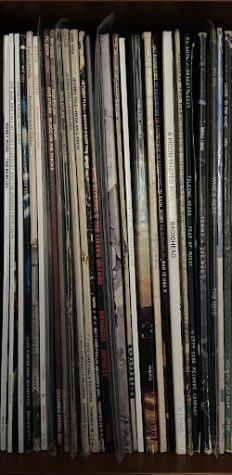
“You Can’t Always Get What You Want”
But, sometimes you kind of can. I’m referring to buying vinyl, the next step (or technically the first) in collecting records. Obviously, every person is going to listen to different things, and I’m not going to tell you what to listen to. I do, however, have some tips on how to find things that interest you, whether you’ve listened to them or not.
The first step is to actually go to a record store. It’s pretty tempting to buy every album you like online (if you are doing this, Discogs is the largest marketplace for records, so that’s a good place to start, and you can find most every album you would want there), and that’s not necessarily a bad thing, but I’d recommend going to an actual store in-person to browse their selection. A lot of the fun in collecting records is just looking through what a store has to offer, but you can also support local small businesses by going to an independently owned record store. You’ll find the brand-new records will be just as expensive, if not more expensive, than ones you can find online, but you can find bargains on used records, especially if the artist isn’t incredibly well-known. Try simply searching for an obscure artist in a store, and you might find a record in good condition for far cheaper than you could find online.
The most important thing I would say about buying records is that there are very few bad reasons to purchase one. You don’t have to stick to things you’ve heard before, or even of things you’ve heard of before. If you find an album’s packaging interesting, but you’ve never heard of the band, I’d recommend going ahead and buying the album if it’s within your budget. A lot of the intrigue for me about having records is just their qualities as a unique object, so don’t feel bad if you don’t love the music, you at the very least have a piece of art that caught your eye.
Another good way to find records is to just ask family and friends if they have albums lying around their house that they don’t listen to. People often don’t throw away or sell their records, and you may be able to find something that you love. I personally found Rush’s “Moving Pictures” in my grandma’s basement, alongside my most prized possession, a 12 inch single of “Wake Me Up Before You Go-Go” by Wham!, complete with an instrumental version of the song on the B-side.
“Everything In Its Right Place”
Now that you have your equipment and your records, you have to have somewhere to put them.
The record player is more obvious. You’ll want to put it on some kind of elevated level surface, preferably one where the turntable, preamp, amplifier, and speakers won’t be bumped into or at risk of falling. It’s important not to have the turntable shake as it’s playing, too, in case the needle escapes its groove on the record, which can scratch the LP.
Storing records is just as important. Vinyl is somewhat fragile, so obviously make sure that the records aren’t at risk of sustaining any impacts where they’re stored. Make sure that the records are out of direct sunlight and extreme temperatures, especially heat. Leaving vinyl somewhere like a hot car can warp the records, ruining the quality of the music.
“The Sound”
Finally, it’s time to play a record. Some key notes:
- Slide the record out of its sleeve carefully. Dropping it would be rather bad.
- Grab the record only by the edges and the label. As clean as you think your hands may be, you’ll potentially damage the vinyl if the oils on your hands get into the grooves.
- Brush your vinyl by letting the turntable spin as you hold the brush to the record to clean it before you play a record, even if the record doesn’t look dusty or is brand-new. This will remove at least some of the material on top of the record and will help the sound come out more clearly.
- There should be a lever or similar mechanism on your turntable to lower the arm and stylus onto a record. Use that. Your hands are not as precise as you may think, and you don’t want to damage anything by scraping the needle across the vinyl.
- Make sure everything is on. You don’t want to give yourself the heart attack that I did when nothing was coming out of my speakers, only to find I hadn’t switched my preamp to the right setting.
- Enjoy the music. You know that, obviously, but just make sure you do.
“The End”
Now, you are finally ready to go out into the world and start collecting records and playing them. I hope you learned something important, and if you didn’t, I hope you thought titling subheadings as songs was clever. Have fun, and please be careful. These things are delicate.
Your donation will support the student journalists of Chamblee High School Blue & Gold. Your contribution will allow us to print editions of our work and cover our annual website hosting costs. Currently, we are working to fund a Halloween satire edition.

Thomas Rice is a senior, and this is his second year on the staff. In five years he hopes to be celebrating a Hawks NBA Finals victory after graduating college. The movie that would best encapsulate his Chamblee experience is "Tall Girl", except instead of “Girl” it’s “Boy” and instead of being about himself it’s about Blue & Gold staff writer Adam Pohl.





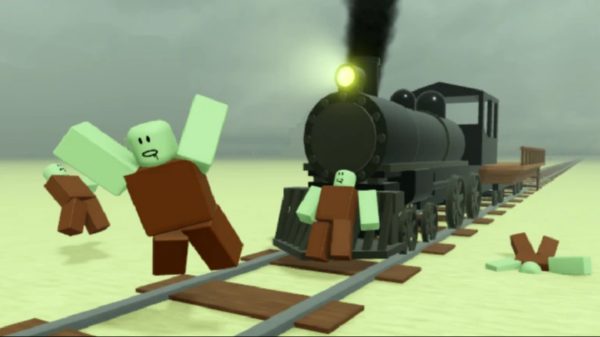


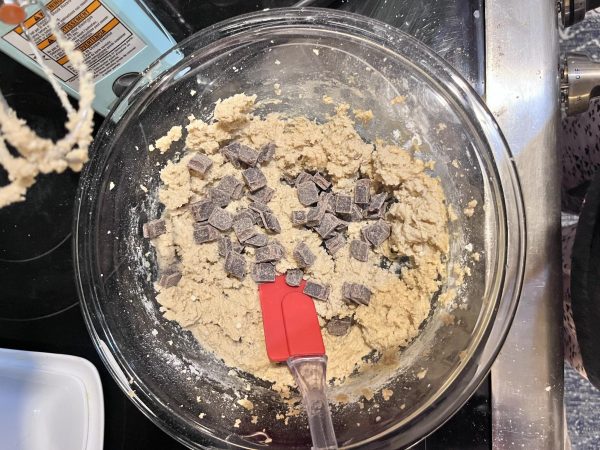
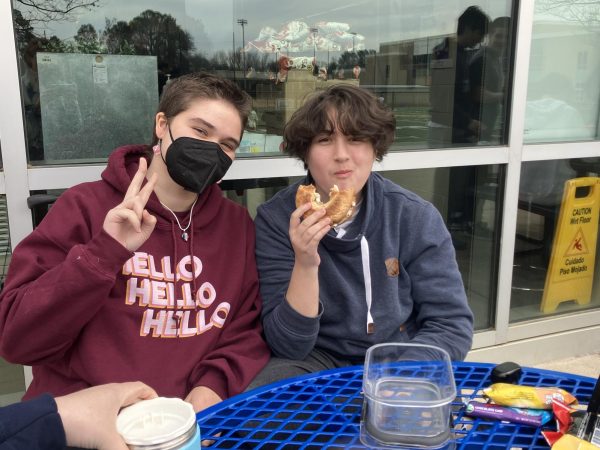


Mr. Avett • Jan 22, 2022 at 8:16 am
As for where you might buy records in the ATL, here’s my take: thrift stores are no longer guaranteed to have hundreds of old albums to dig through, and a lot of what you find there is not going to be in good condition. But it will be cheap and a nice way to check out some music you haven’t heard before. Several antique market places around town have vendors with mini record stores in them, and you can find deals there. As for brick and mortar stores: Wuxtry near Emory has a great selection of new and used records and the prices are right; Ella Guru is small and used-only, but he gets a constant supply of cool records in from people unloading stuff they don’t listen to anymore; Fantasyland in Buckhead is daunting, requires a few hours to get a handle on but has what you are looking for somewhere; despite its name, Decatur CD actually has records now and free parking (!); and in Little Five Points there’s WaxNFacts, which has a lot of stuff but can be difficult to navigate, and Criminal Records, which has a ton of new vinyl (the cool vinyl, too) and a growing and impressive section of used records. Parking is dicey though. There’s another spot just OTP, too, but imma keep that to myself.
E. Avett • Jan 20, 2022 at 3:50 pm
Good information for a lifelong hobby!! Fun to read!